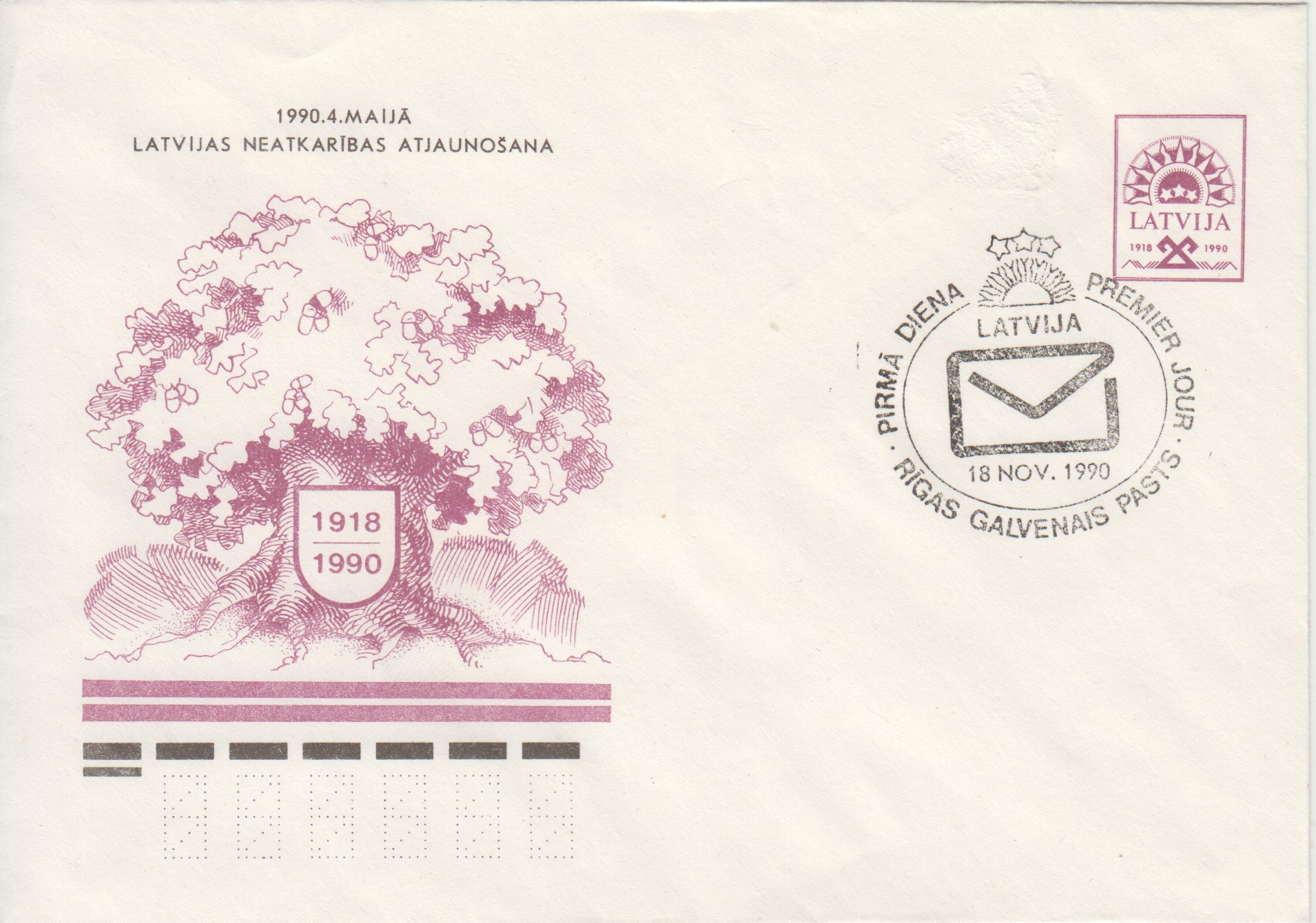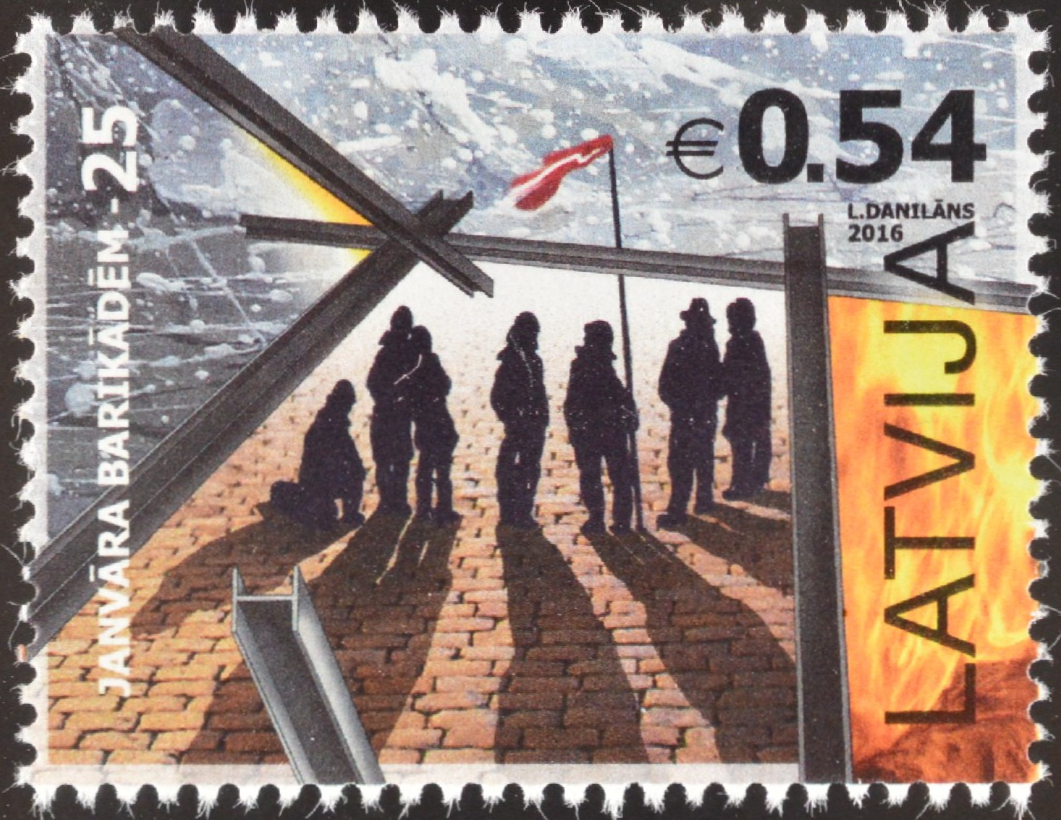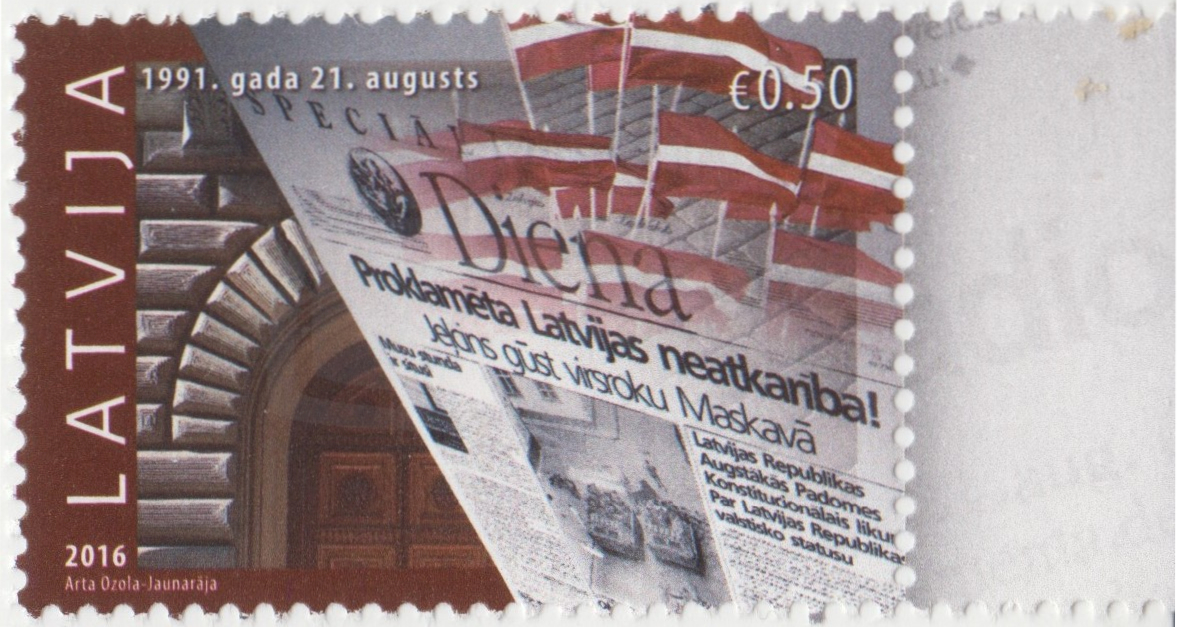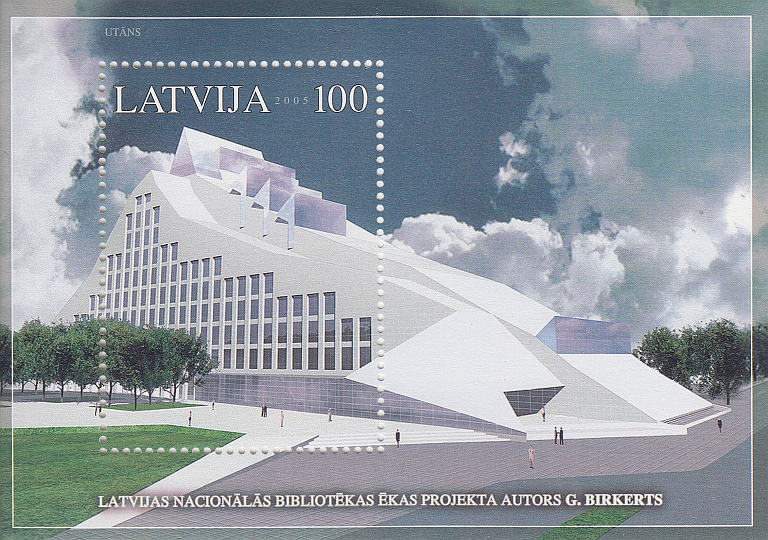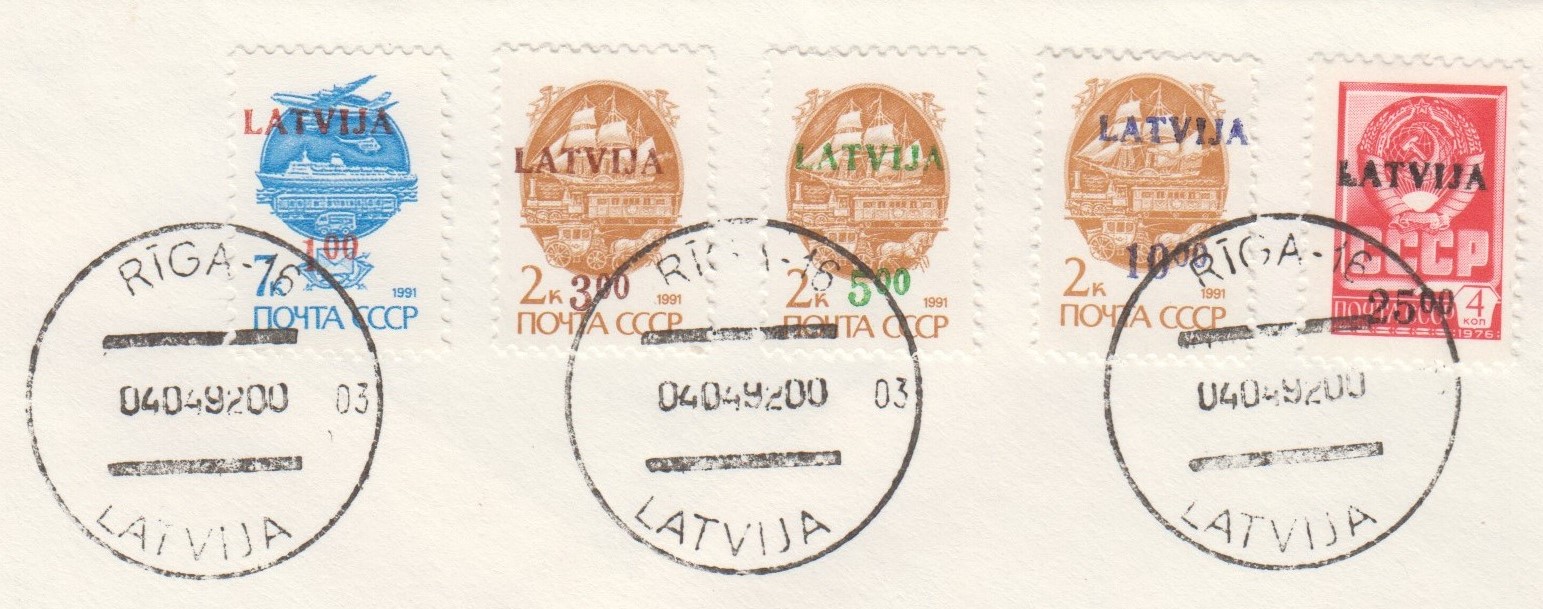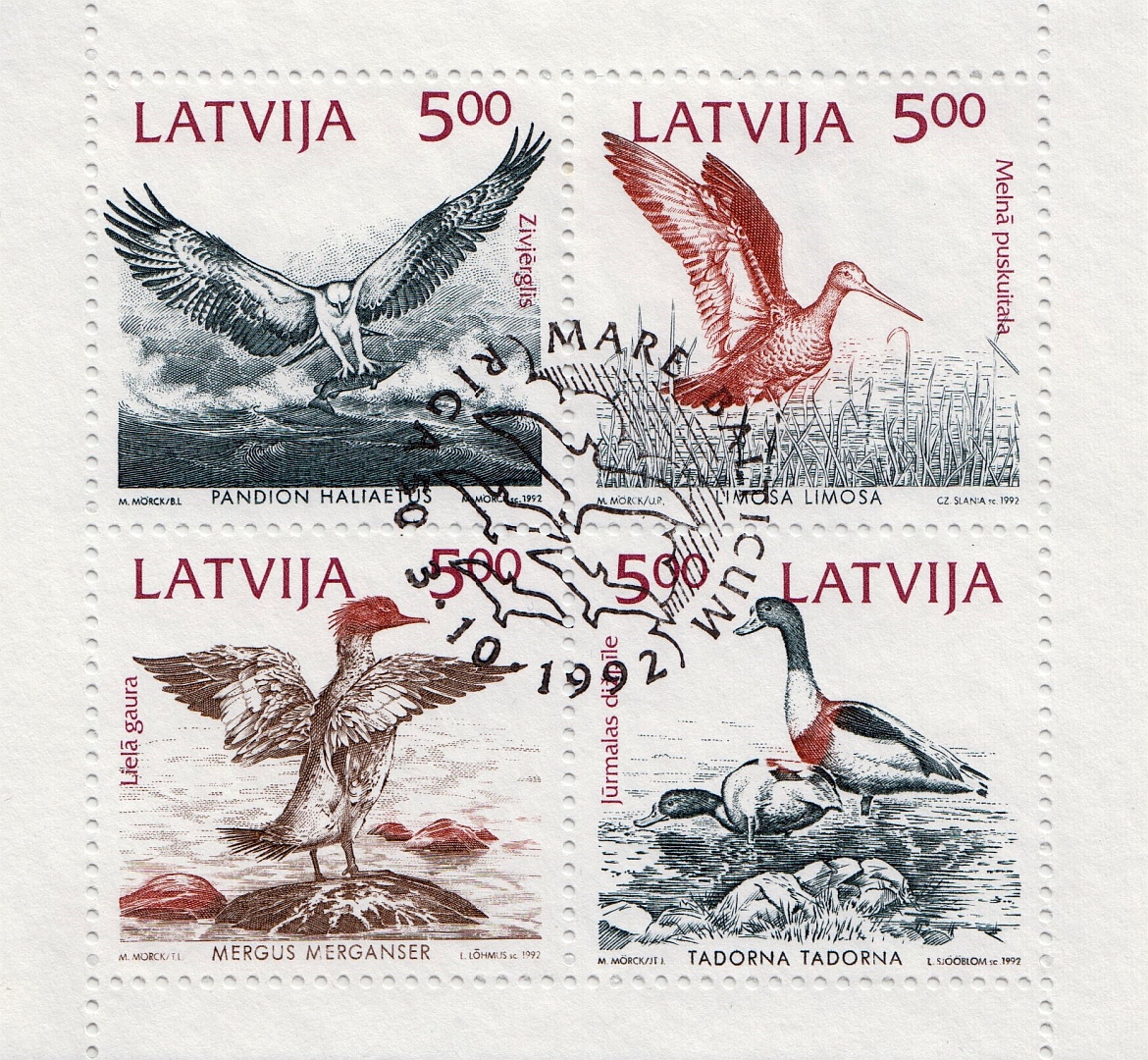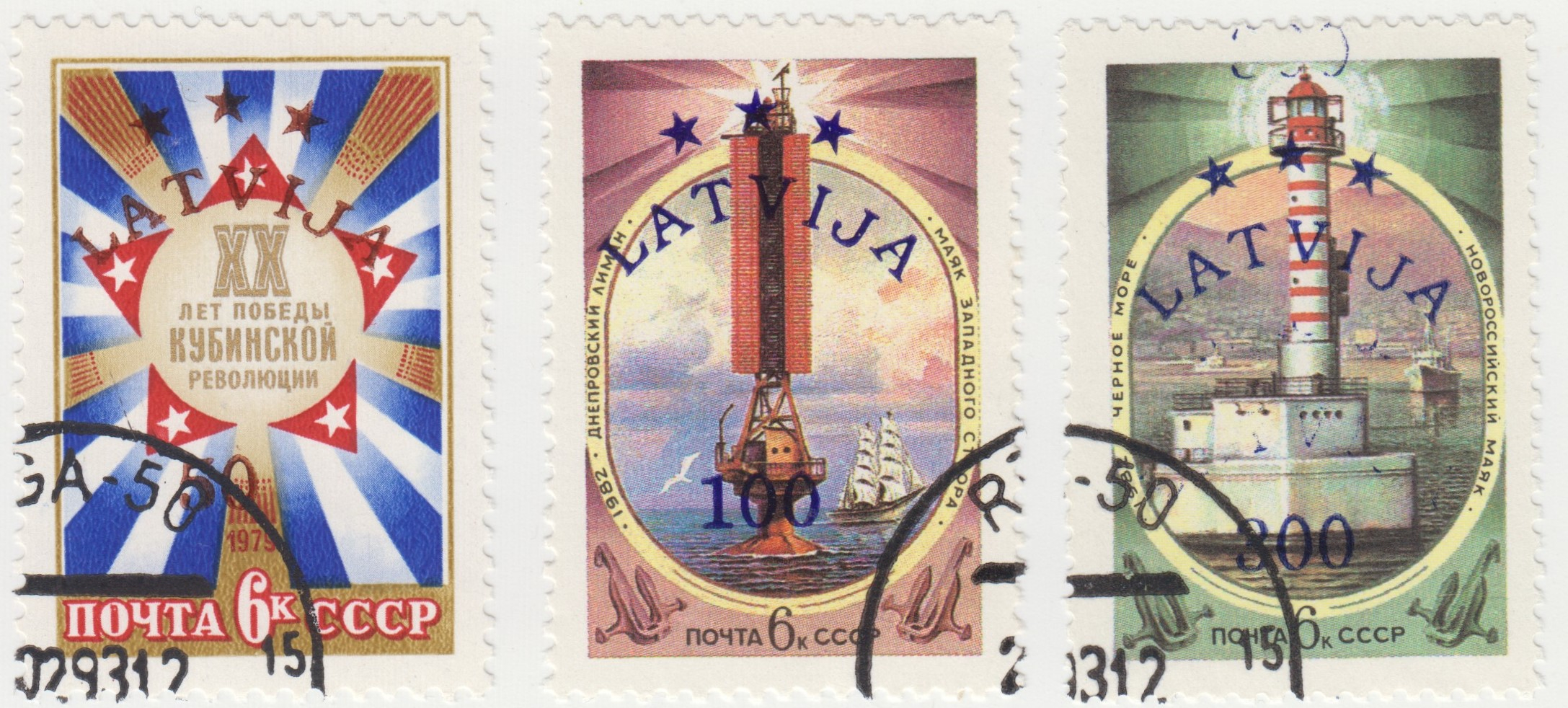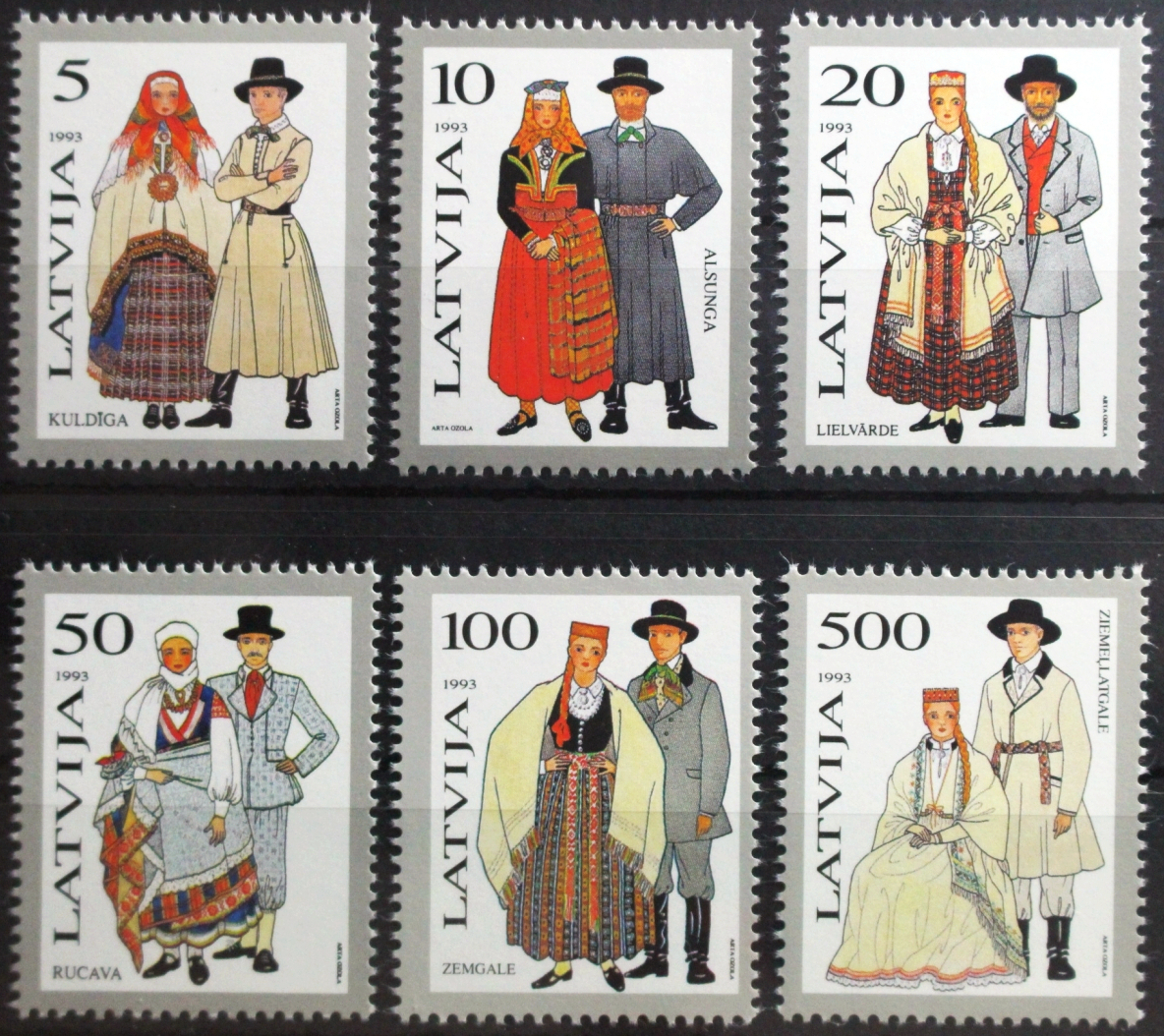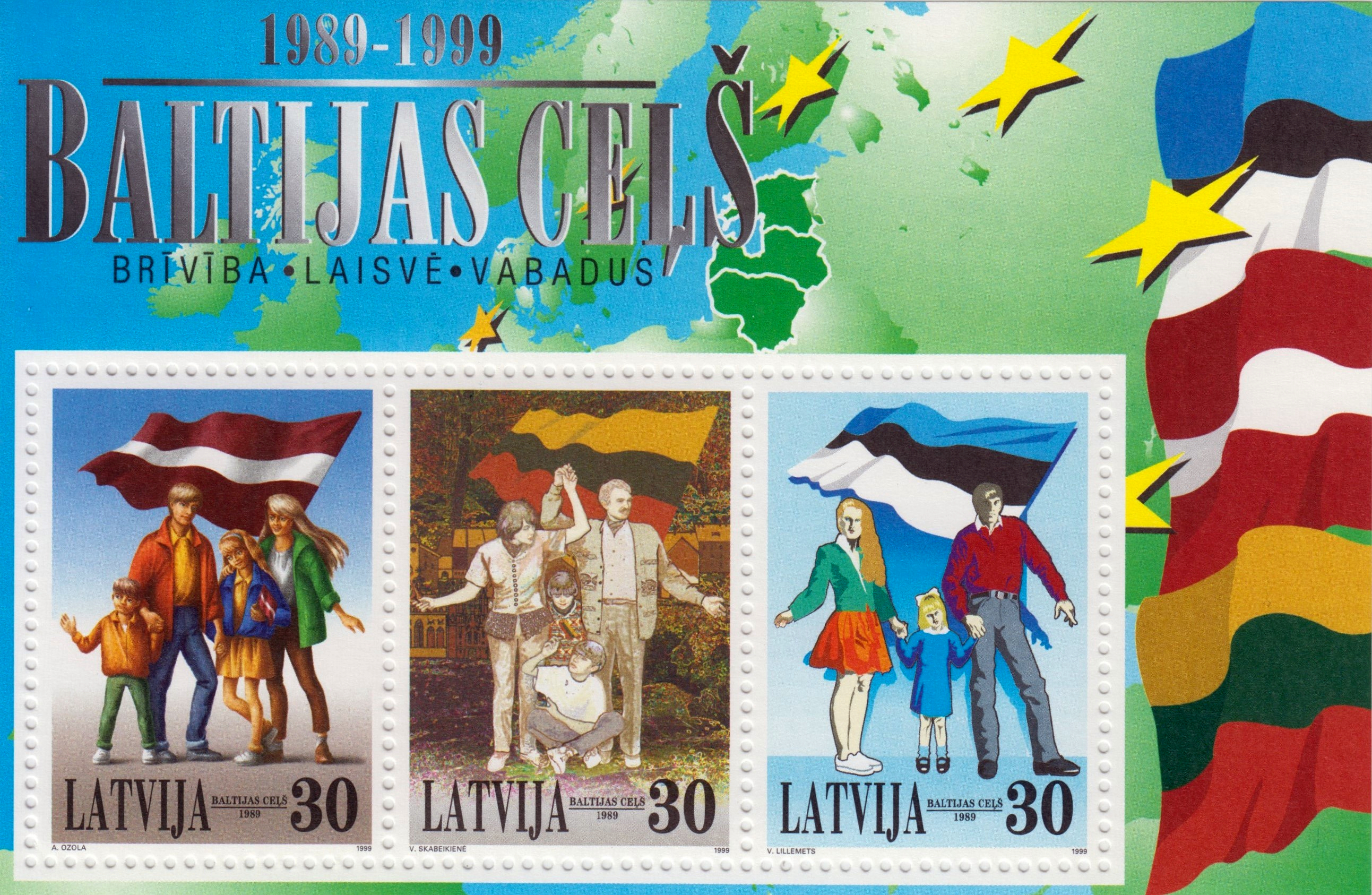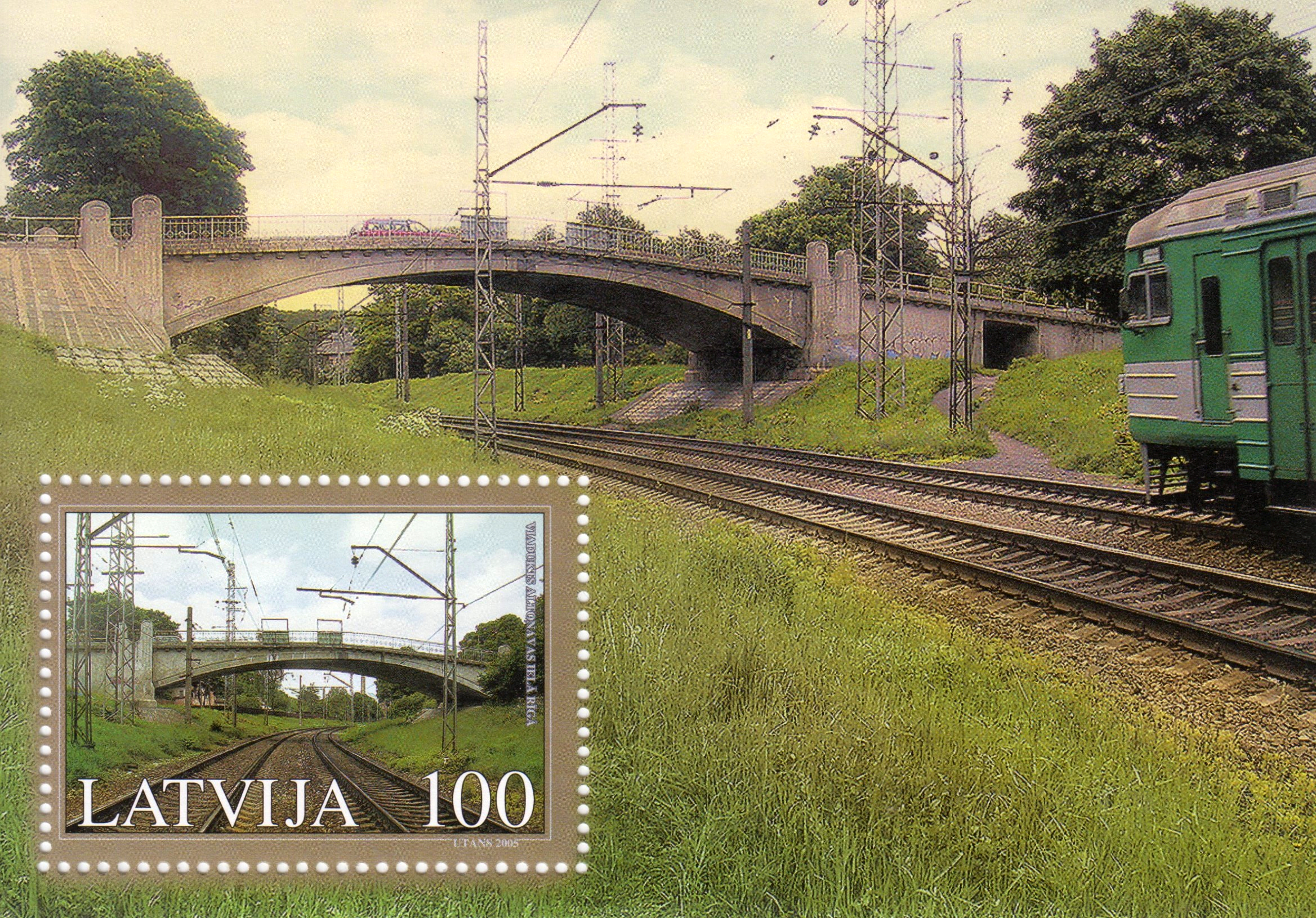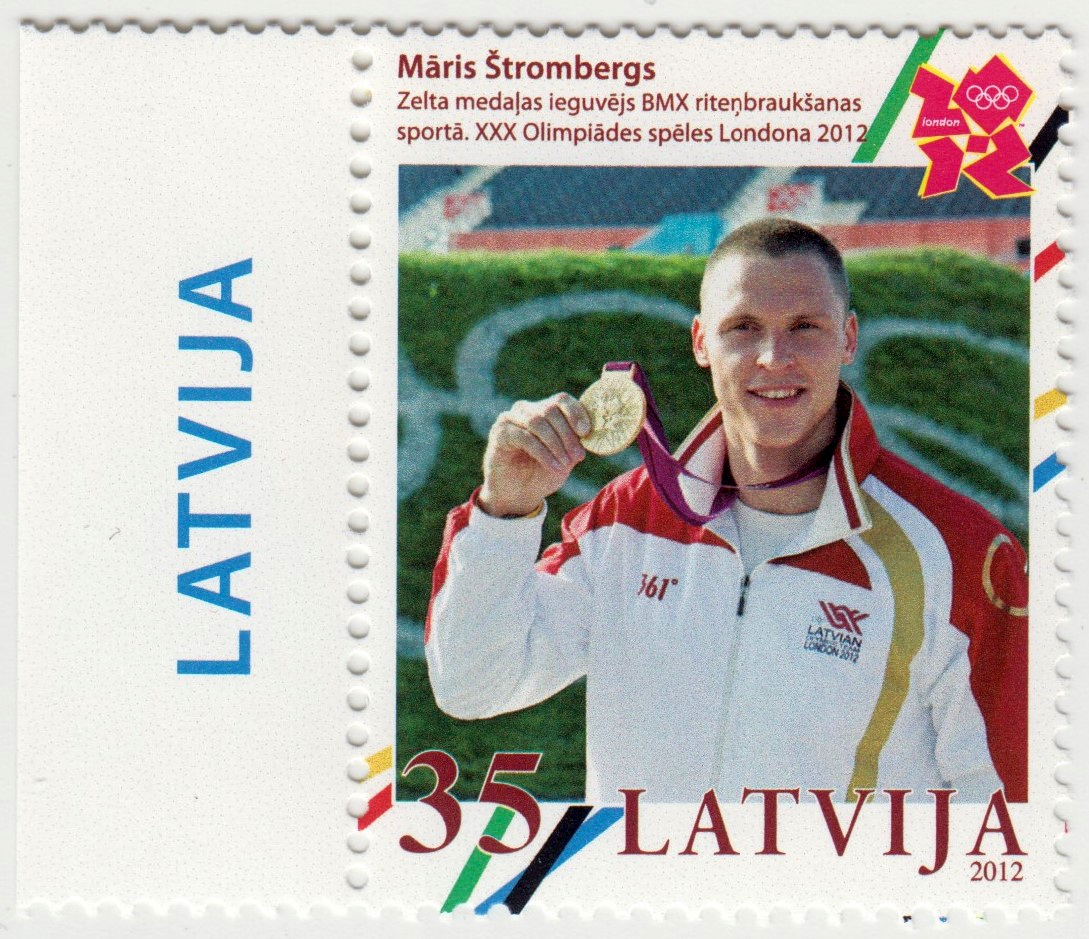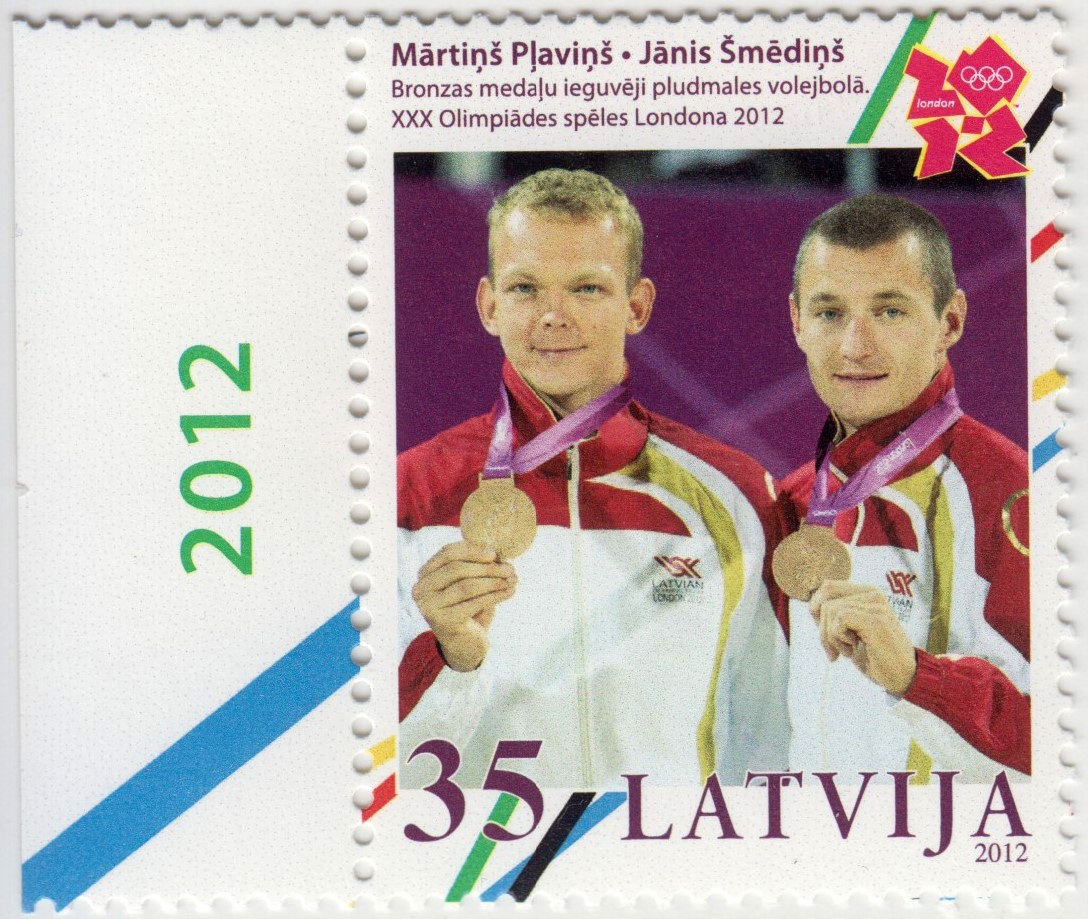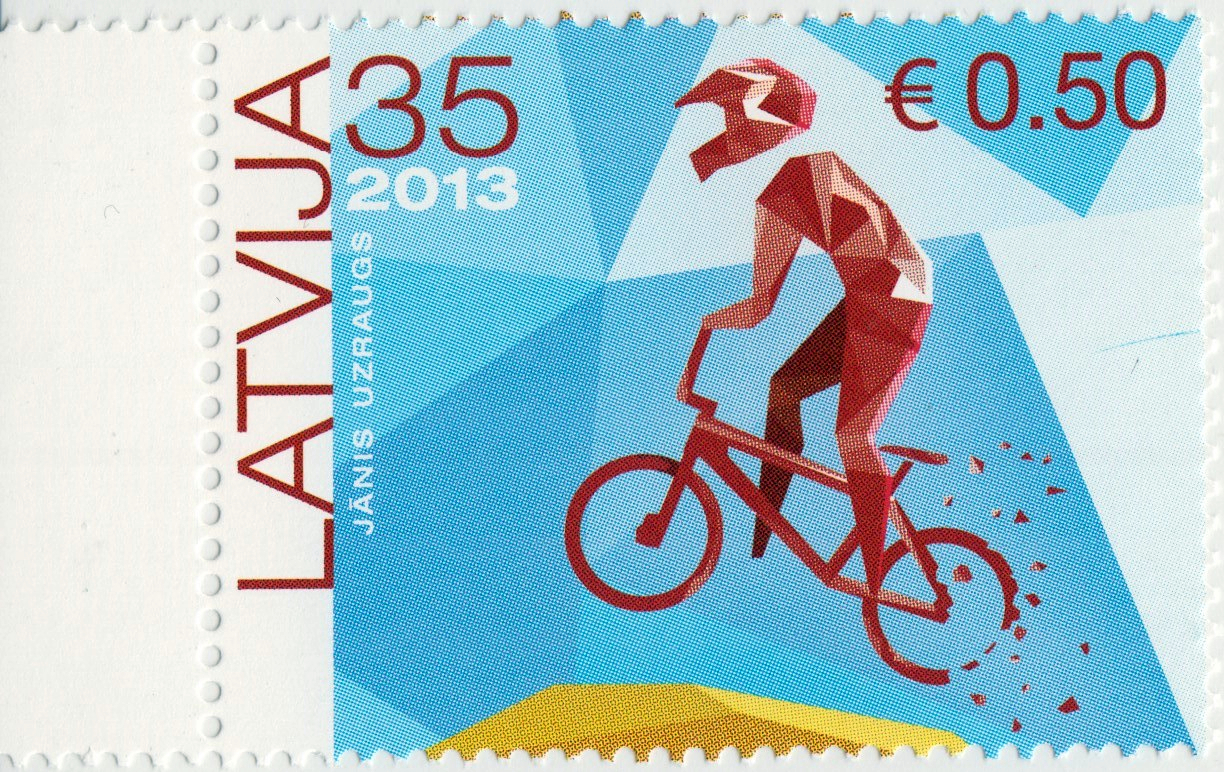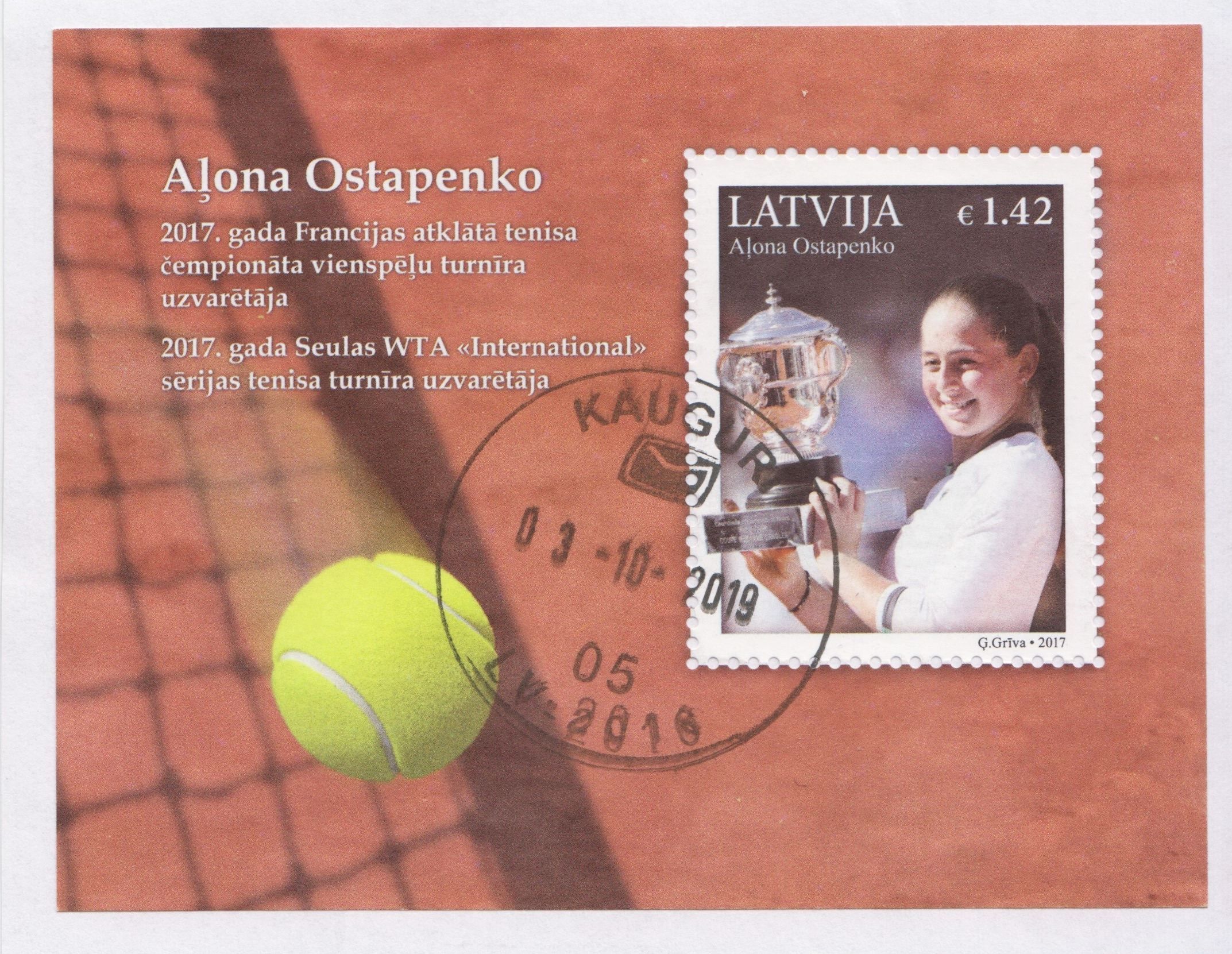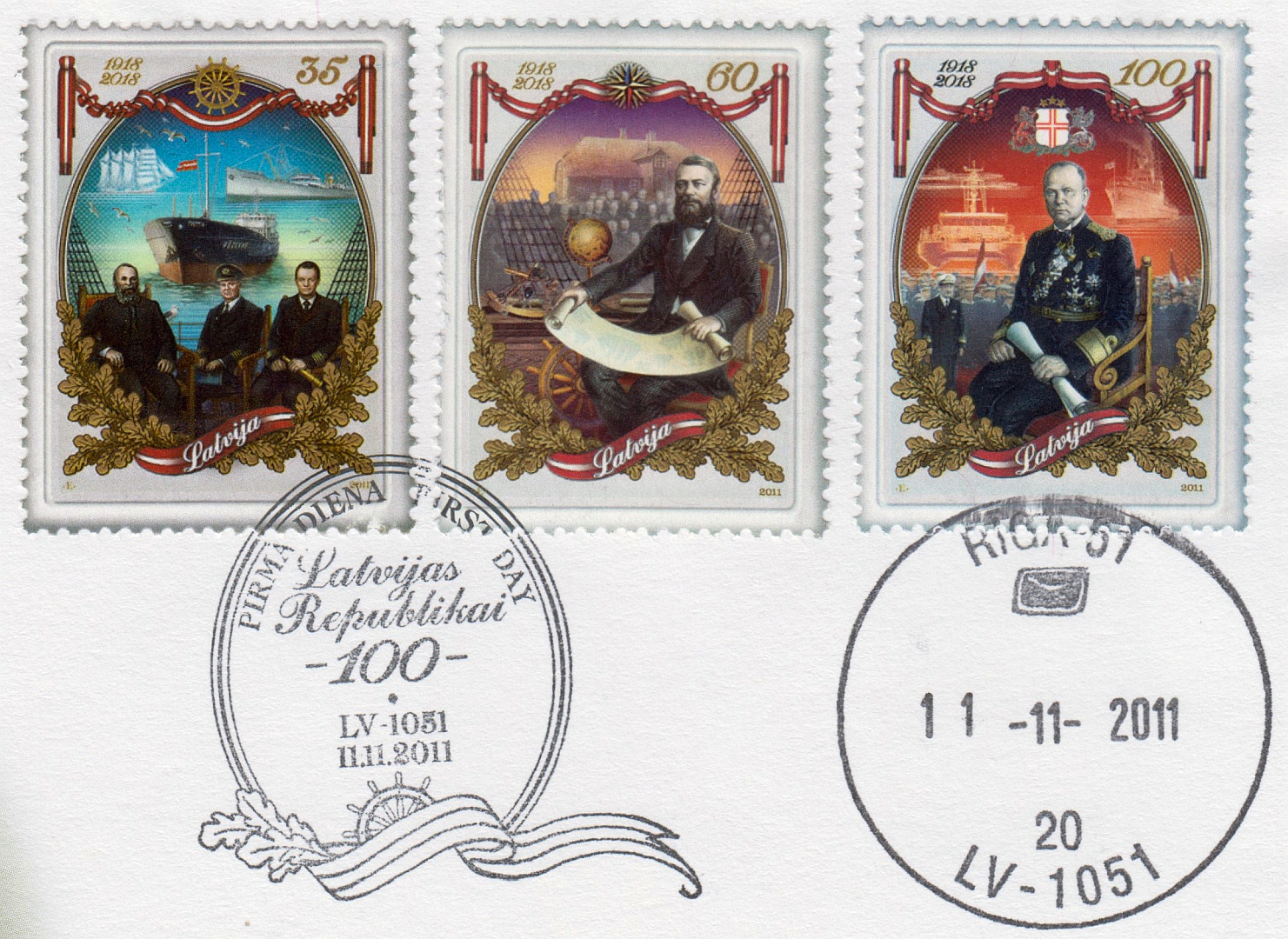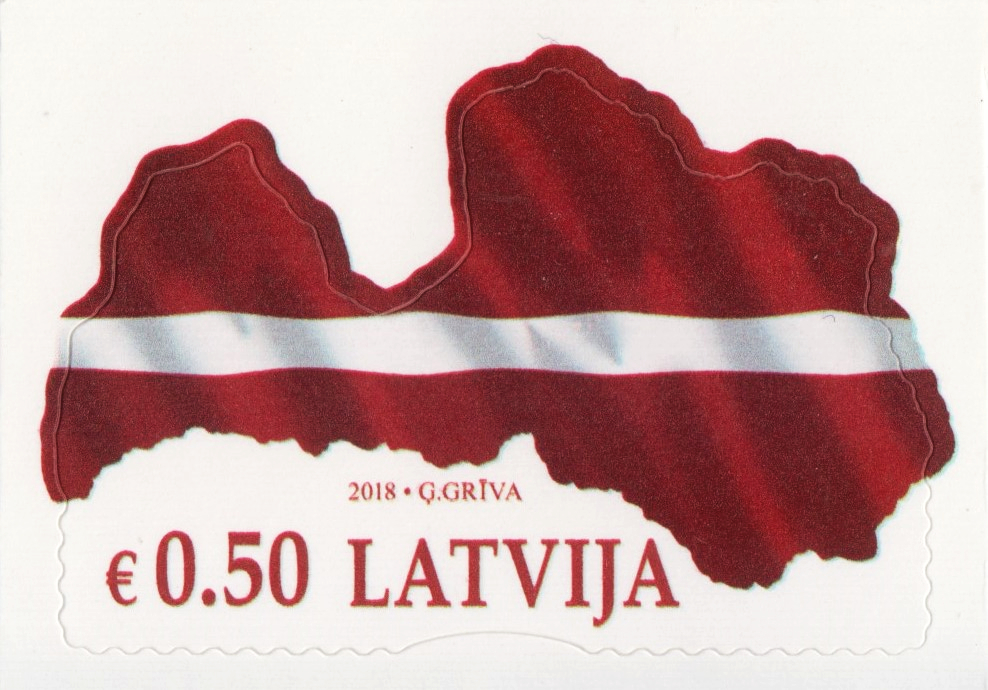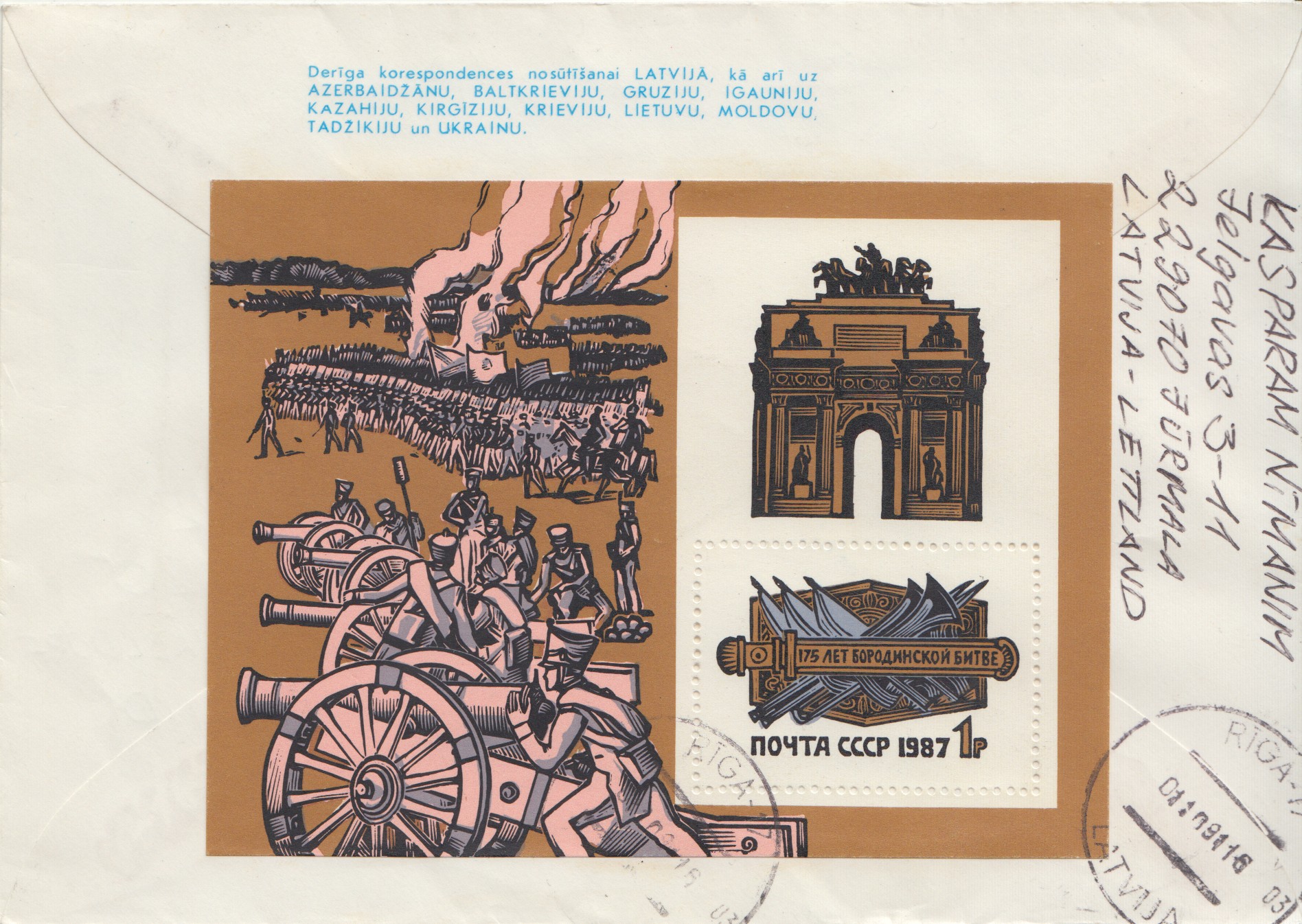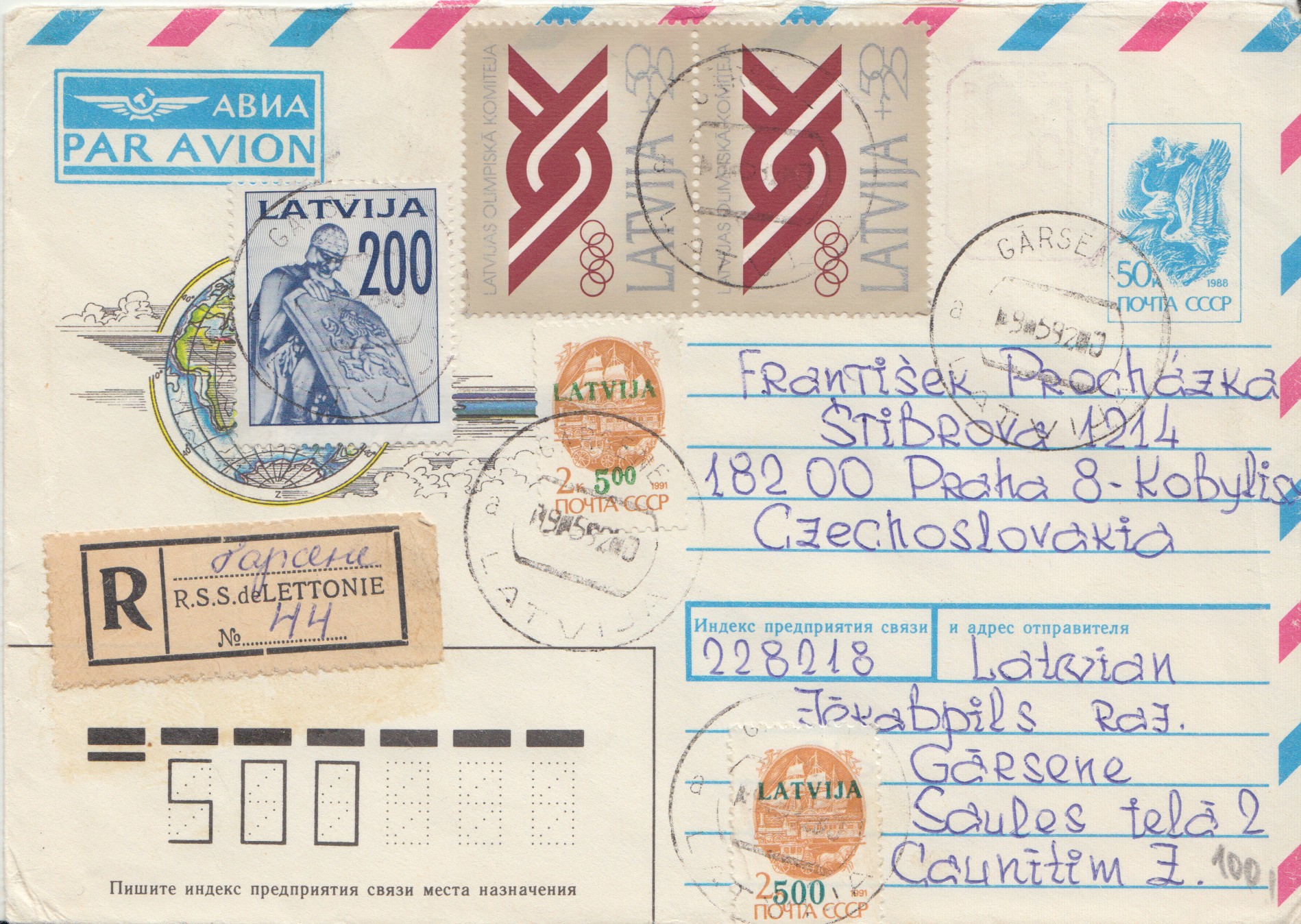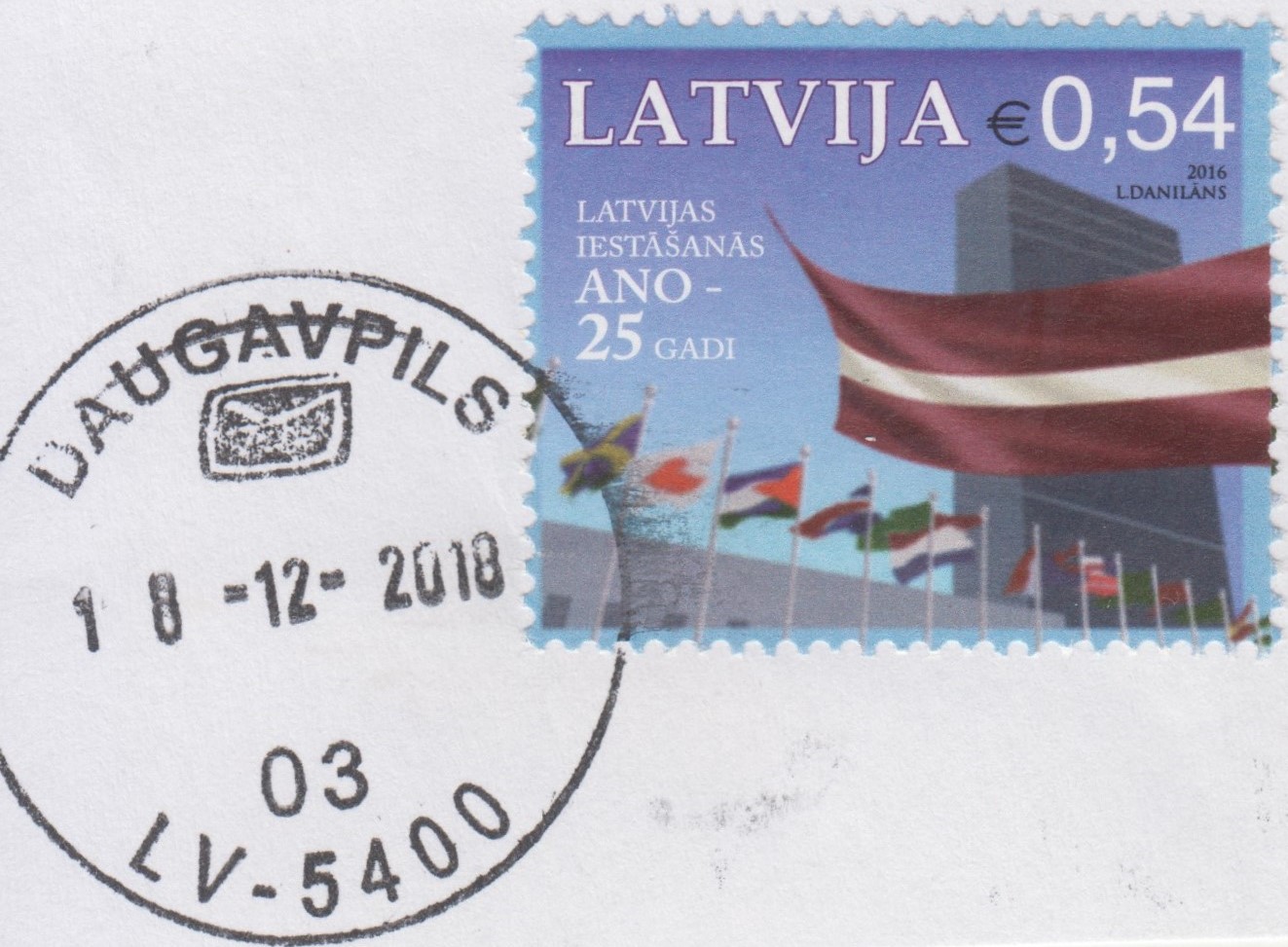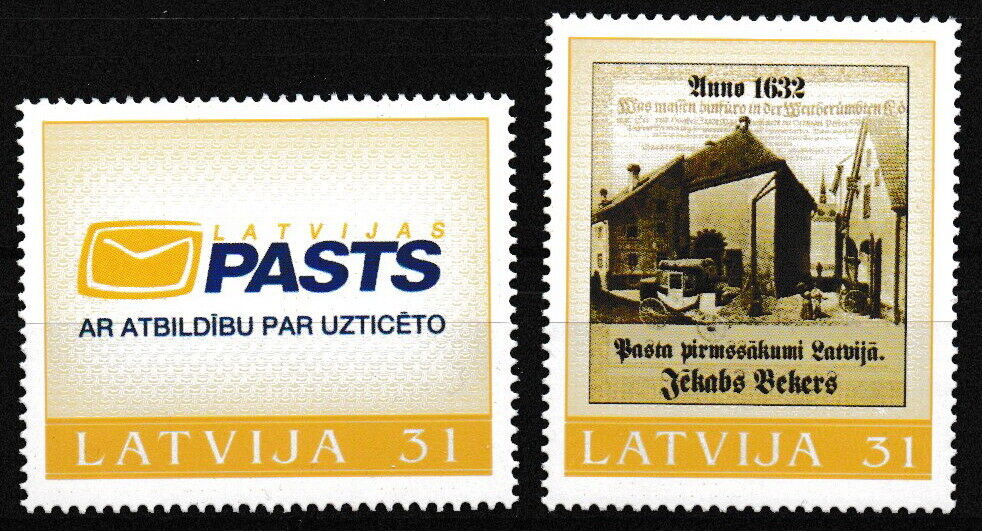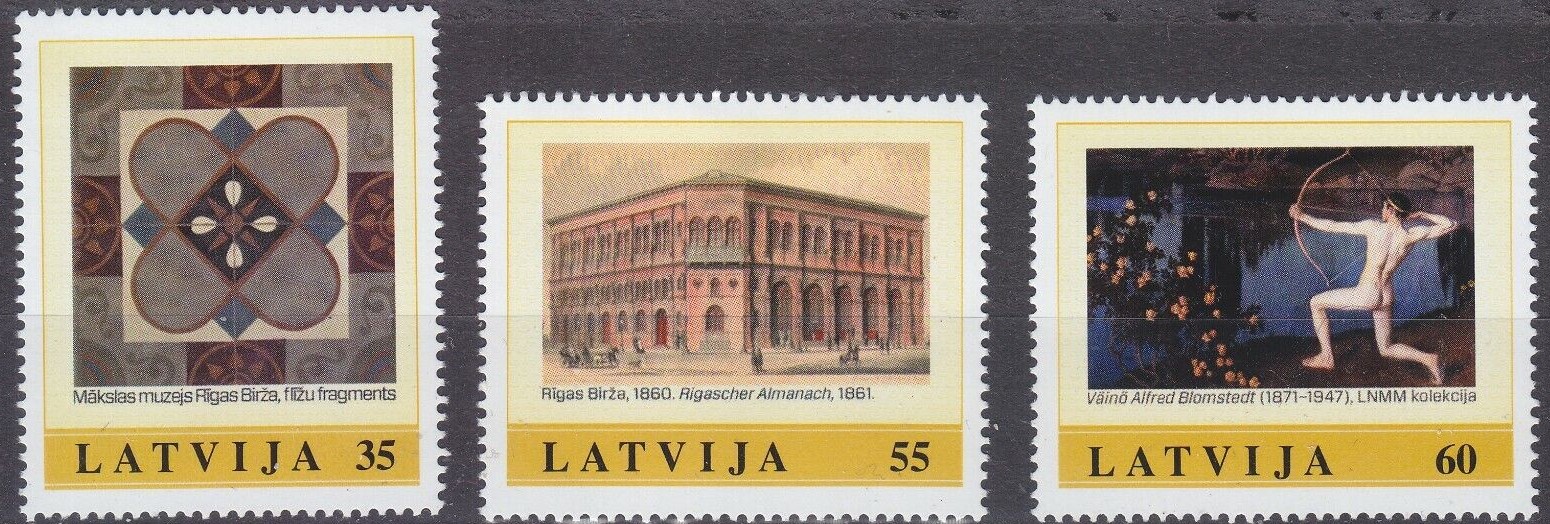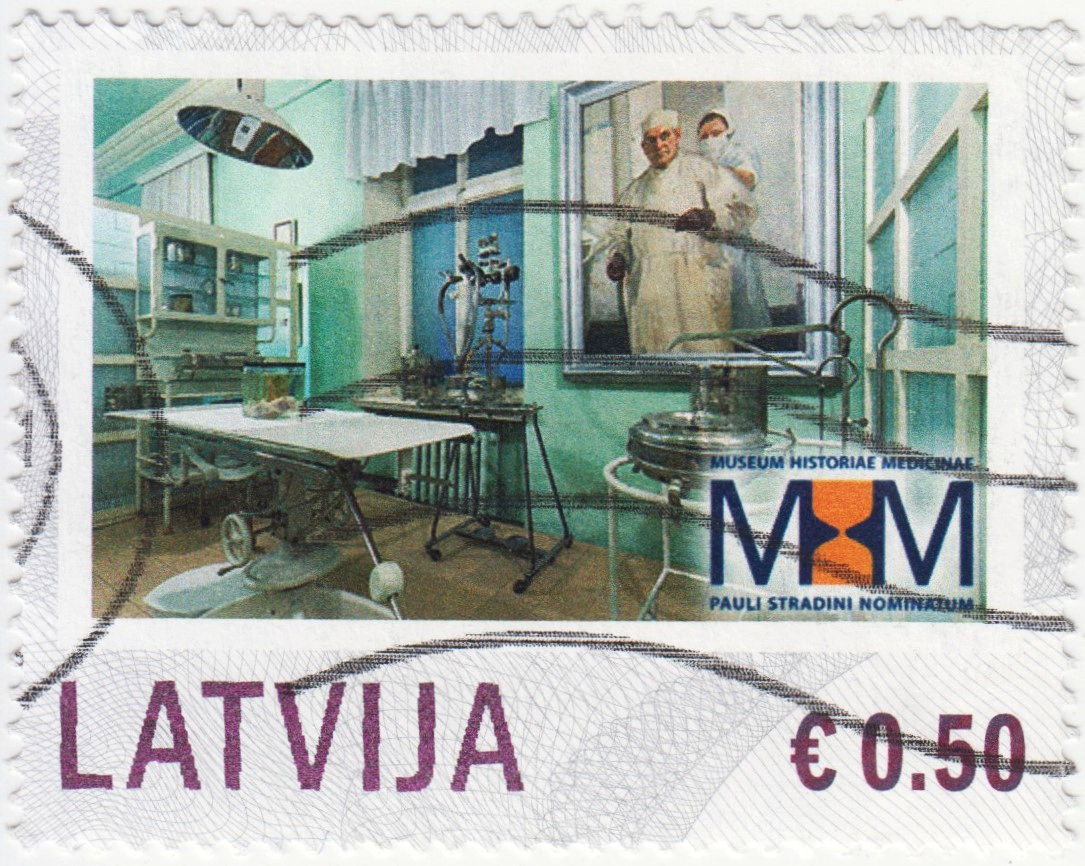Latvia
-
Courland, Semigallia, Latgale
-
Royal Swedish Post
-
Imperial Russian Post
-
German Occupation / Ob. Ost
-
Independent Republic of Latvia
-
Soviet Occupation
-
German Occupation / Ostland / Courland
-
Camp Mail / Latvians in Exile
-
Independent Republic of Latvia (restored)
Restoration of independence 1990/91
In the second half of the 1980s, the General Secretary of the Communist Party, Mikhail Gorbachev, began to introduce political and economic reforms in the Soviet Union called glasnost and perestroika.
In the summer of 1987, the first large demonstrations took place in Riga at the Freedom Monument – a symbol of independence –.
In the summer of 1988, a national independence movement formed, uniting in the Latvian Popular Front. The Latvian SSR, like the other Baltic republics, was given greater autonomy within the Soviet Union.
In 1989, the USSR Supreme Soviet adopted a resolution on the occupation of the Baltic States, stating that the occupation was "not in accordance with the law" and not with the "will of the Soviet people".
In the democratic elections of March 1990, the candidates of the Latvian Popular Front won a two-thirds majority in the Supreme Soviet of Latvia.
On May 4, 1990, the Supreme Soviet of Latvia adopted the Declaration on the Restoration of the Independence of the Republic of Latvia.
The Supreme Soviet in Moscow initially continued to regard Latvia as a Soviet republic. In January 1991, Soviet political and military forces unsuccessfully attempted to overthrow the authorities of the Republic of Latvia by occupying the central publishing house in Riga and forming a Committee of National Salvation to usurp the functions of government.
After the failed Soviet coup attempt, the Republic of Latvia declared the end of the transition period on August 21, 1991 and restored its full independence as well as the 1922 constitution.
Latvia resumed diplomatic relations with other states.
This was followed on September 6, 1991 by the recognition of the independence of Latvia, Estonia and Lithuania by the State Council of the USSR.
In 1993, the Saeima, Latvia's parliament, was newly elected. Russia ended its military presence by completing its troop withdrawal in 1994 and shutting down the Skrunda-1 radar station in 1998.
Vaira Vīķe-Freiberga was President of Latvia from 1999 to 2007. She was the first female head of state and worked to get Latvia to join both NATO and the European Union in 2004.
The collecting area "Latvia as of 1991"
A still rather restrained issuing policy and a low circulation compared to European territorial states make collecting Latvian stamps interesting.
In the well-stocked online shop of the Latvian Post (veikals.pasts.lv/en) many issues and annual sets can still be purchased at the postal price, even from the early years of the regained independence from 1991 onwards.
For motif collectors, the various flower and animal motifs are particularly interesting, and sports stamps also appear regularly.
Postal history
Soviet Rouble Period
The currency of the newly independent state was initially the Soviet ruble, which also included the denominations on the postal stationery and stamps issued by the Republic of Latvia. The stamps of the Soviet Union were valid for postage until 30.6.1992, the Soviet money until July 19, 1992.
Many postal stationery items were used in the Soviet Union, and Latvia also issued stationery in 1991 as the first edition of the now again independent country.
The first own stamps of the again independent Latvia were issued on October 19, 1991.
On December 23, 1991, the Soviet stamps (Mi.Nr. 6177–6178) with a coloured overprint were issued at the now necessary 100, 300, 500 and 1,000 kopecks.
Latvijos patas is the state-owned postal company, which was re-established on January 2, 1992, after regaining independence, initially as a state-owned non-profit organisation. On November 1, 2004, it was transformed into the state-owned joint-stock company VAS Latvijas Pasts.
Latvijos patas initially issued more stamps in Soviet rouble nominals, but with significantly higher denominations than before due to rapid inflation.
Latvian rouble period (May 7, 1992 to March 4, 1993)
In order to better control the amount of cash in circulation, the Latvian rouble (at an exchange rate of 1:1) was introduced on May 7, 1992 in parallel with the Soviet rouble on a transitional basis (until the introduction of a currency independent of the rouble). The Latvian rouble also formed the denominations of the stamps now issued.
On June 17, 1992, Latvia rejoined the World Postal Union (UPU).
← Mi-No. 340–343, Nature conservation – Birds of the Baltic Sea, parallel issue with Estonia, Lithuania and Sweden in stamp booklet MH 1, date of issue October 3, 1992.
Lats period (March 5, 1993 to 31.12.2013)
The currency lats existed in the Republic of Latvia from 1922 to 1940. It was reintroduced on March 5, 1993 (exchange rate: 200 Latvian roubles = 1 Lats of 100 Santīmu).
The joint issues with the other Baltic states are also popular, such as the Via Baltica (Mi no. 396–398 or souvenir sheet 6) or souvenir sheet 11 with the old ships on the Baltic Sea.
Medallists London 2012 (Mi-No. 851 and 852),
Date of issue November 23, 2012.Maris trombergs (*1987) won the first gold medal awarded in the sport of BMX racing for men at the 2008 Summer Olympics in Beijing. He managed to defend his title at the 2012 Summer Olympics. He was the first Latvian Olympian to win gold twice.
Martin Plavin (*1985) and Janis medin (*1987) won the bronze medal in beach volleyball at the 2012 Summer Olympics.
Double nominals Lats – Euro
After the global economic slump in 2008 / 2009, the Latvian economy recovered quickly so that the EURO () could be introduced on January 1, 2014.
As with all candidate countries, the exchange rate of the national currency was pegged to the euro (1 euro = approx. 0.70 Latvian lats) some time before and stamps with both currency denominations were issued in "double nominal". These were issued for the first time on January 30, 2013 (Mi no. 858).
Euro period (since 1.1.2014)
100 years of Latvia
Between 2009 and 2018, Latvia Post paid tribute to the Centenary of the Republic of Lithuania with a total of ten annual sets of 3 stamps each.
The tenth and last of these sets appeared in the anniversary year 2018.
On March 9, 2018, on the occasion of the 100th anniversary of the Latvian state (November 18, 1918), the first irregularly shaped stamp was issued by the Latvian Post.
This stamp combines the crimson national flag with its white horizontal stripe and the map of the country – it has the outline shape of Latvia.
Postmarks
Vending machine stamps
On May 3, 1994, the Latvian Post Office issued vending machine stamps with the motif "National Ornaments", each with 2 transport holes on the upper and lower edge. These vending stamps were valid until 2004.
Personalised stamps
The Latvian Post is very reluctant to produce personalised stamps.
Personalised stamps were issued for the first time (Mi. no. 676 to 677) on June 9, 2006. Latvian customers can also order stamps with a personalised figure, but the frame drawings remain the same in each case.
-
Private Mail in Latvia



